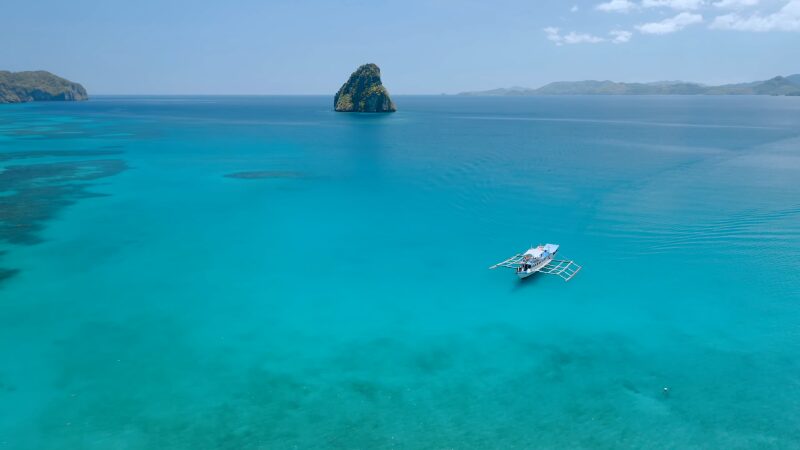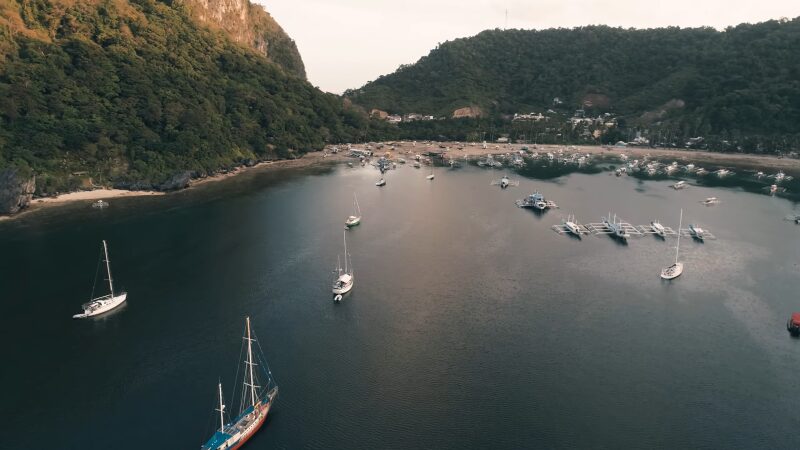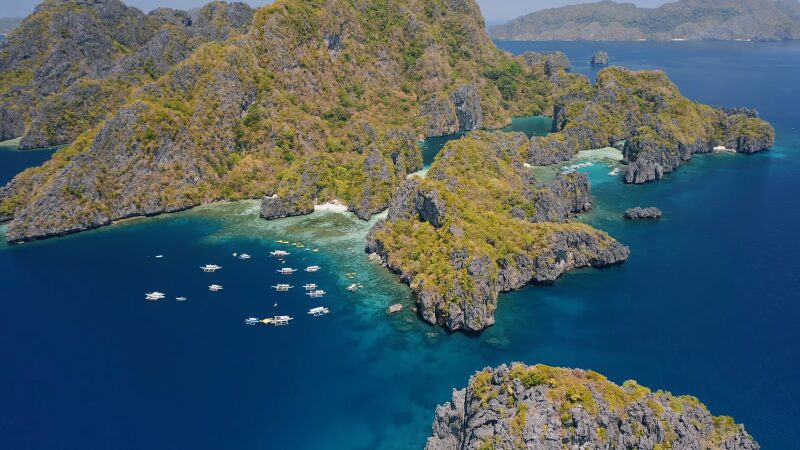Did you know that the U.S. government has reissued the Philippines Travel Advisory, warning American citizens to exercise increased caution when traveling to the island nation? This advisory comes in the wake of a significant rise in reported incidents involving crime, terrorism, civil unrest, and kidnapping. While the Philippines is a beautiful destination, it’s crucial for travelers to be aware of the potential risks and take appropriate safety precautions.
As someone who has personally experienced the warmth and hospitality of the Filipino people, the news of these heightened security concerns hits close to home. The Philippines holds a special place in my heart, and I can’t help but feel a sense of unease knowing that certain areas of the country have become increasingly dangerous for visitors. However, with the right information and preparation, I believe it’s still possible to enjoy a safe and fulfilling trip to this vibrant, culturally rich destination.
Key Takeaways
- The U.S. government has reissued the Philippines Travel Advisory, warning of increased risks due to crime, terrorism, civil unrest, and kidnapping.
- Certain areas of the Philippines, such as the Sulu Archipelago and Sulu Sea, have been designated as high-risk and should be avoided.
- Travelers are advised to exercise increased caution, especially in Mindanao, where the Philippine government has declared a “State of National Emergency on Account of Lawless Violence.”
- Monitoring local media, enrolling in the STEP program, and reviewing the Department of State’s Country Security Report are recommended for a safe and successful trip.
- Vaccination and testing requirements, as well as quarantine protocols, must be followed for entry and exit from the Philippines.

Philippines Travel Advisory Overview
The Philippines is a diverse and vibrant country, attracting millions of visitors each year. However, the U.S. government has issued a travel advisory for the Philippines, advising increased caution due to concerns over crime, terrorism, civil unrest, and kidnapping.
Areas with Increased Risk
The Sulu Archipelago and Sulu Sea are areas of particular concern, as terrorist and armed groups continue to plot kidnappings, bombings, and other attacks in these regions. Travelers are urged to exercise extreme caution and avoid these areas if possible.
Terrorism and Civil Unrest Concerns
Terrorist and armed groups have targeted tourist locations, markets, shopping malls, and local government facilities in the Philippines. The Philippine government has declared a “State of National Emergency on Account of Lawless Violence in Mindanao,” indicating the ongoing threat of terrorism and civil unrest in the region.
Crime and Kidnapping Threats
Incidents of crime, including kidnapping for ransom, are a significant concern in parts of the Philippines. Travelers are advised to remain vigilant, especially in crowded public areas and when traveling at night.
High-Risk Areas: Do Not Travel

The U.S. government strongly advises U.S. citizens to avoid travel to certain regions in the Philippines due to the elevated risks of crime, terrorism, civil unrest, and kidnapping. Two areas in particular stand out as high-risk and should be considered off-limits for most travelers.
The Sulu Archipelago and Sulu Sea
The Sulu Archipelago, including the southern Sulu Sea, is considered an extremely dangerous area for travelers. Terrorist and armed groups in the region have been known to conduct kidnappings on land and at sea, often targeting foreigners for ransom. In addition, these groups have carried out bombings and other attacks, making the Sulu Archipelago and Sulu Sea a no-go zone for U.S. citizens.
Marawi City in Mindanao
Marawi City, located in the Mindanao region of the Philippines, is also designated as a high-risk area that the U.S. government advises against visiting. The city and surrounding areas have experienced civil unrest, clashes between government forces and terrorist groups, and other security threats that pose a significant danger to travelers.
Exercise Increased Caution in Mindanao

Travelers to the Philippines should exercise increased caution when visiting the Mindanao region, particularly the Cotabato City area and the Maguindanao, North Cotabato, and Sultan Kudarat provinces. The Philippine government has maintained a state of emergency and enhanced police presence in these areas due to the ongoing threat of terrorism and civil unrest.
State of Emergency and Police Presence
The Philippine government has declared a “State of National Emergency on Account of Lawless Violence in Mindanao,” indicating the region’s heightened security concerns. Terrorist and armed groups continue to target U.S. citizens, foreigners, civilians, local government institutions, and security forces with kidnappings, bombings, and other attacks in Mindanao.
Limited U.S. Government Assistance
Due to the security risks in Mindanao, the U.S. government’s ability to provide assistance to U.S. citizens in the event of an emergency may be limited. Travelers are advised to exercise extreme caution, monitor local media for updates, and enroll in the Smart Traveler Enrollment Program (STEP) to receive security alerts and facilitate communication with the U.S. government in case of a crisis.
Philippines Travel Advisory

If you plan to travel to the Philippines, the U.S. government advises closely monitoring local media for any breaking events and adjusting your plans accordingly. Avoid demonstrations or large gatherings, as these can suddenly turn dangerous.
Enroll in STEP Program for Alerts
To stay informed and facilitate assistance in an emergency, the U.S. government recommends enrolling in the Smart Traveler Enrollment Program (STEP). This free service will provide you with important safety and security updates, as well as make it easier for the U.S. Embassy to locate and assist you if needed.
Review Country Security Report
Thoroughly reviewing the U.S. Department of State’s Country Security Report for the Philippines is also advised. This comprehensive resource outlines the Philippines travel safety, Philippine travel advice, and US government travel advisories that U.S. citizens should be aware of before their trip.
Entry and Exit Requirements
When planning a trip to the Philippines, it’s crucial to be aware of the country’s entry and exit requirements. The COVID-19 pandemic has led to several changes in the Philippines’ travel policies, which travelers must adhere to ensure a smooth and safe journey.
Vaccination and Testing Requirements
To enter the Philippines, travelers must be fully vaccinated against COVID-19, with the exception of minor children below the age of 12 who are traveling with fully vaccinated parents or guardians. Unvaccinated foreign nationals will not be allowed admission. Travelers must present acceptable proof of vaccination upon arrival.
e-Health Declaration Card
All arriving passengers, regardless of vaccination status, must complete an online e-Health Declaration Card within 3 days prior to their departure for the Philippines. This form collects important health and travel information, which helps the Philippine government monitor and manage the COVID-19 situation.
Quarantine and Testing for Positive Cases
Travelers who test positive for COVID-19 upon arrival in the Philippines may be required to undergo quarantine and additional testing, in accordance with the country’s current health protocols. It’s essential to stay informed about the latest requirements and be prepared to comply with any changes or updates to the Philippines’ entry and exit rules.
Conclusion
The U.S. government has reissued the Philippines Travel Advisory, providing essential information for American citizens planning to visit the Philippines. Key highlights include areas with increased risk, high-risk areas to avoid, and entry/exit requirements. Travelers are advised to closely monitor local media, enroll in the STEP program, review the country security report, and strictly adhere to all Philippine government entry and exit rules to ensure a safe and successful trip.
Maintaining vigilance, staying informed, and following official guidelines are crucial for navigating the Philippines safely. By taking these precautions, U.S. citizens can enjoy the country’s rich culture and natural beauty while minimizing potential risks. The advisory serves as a valuable resource for making informed decisions and preparing for a secure and memorable journey to the Philippines.
Overall, the reissued Philippines Travel Advisory underscores the importance of thorough travel planning and risk mitigation for U.S. citizens exploring this vibrant Southeast Asian destination. By heeding the government’s guidance and exercising caution, travelers can make the most of their Philippine adventure while prioritizing their safety and well-being.
FAQ
What are the key highlights of the Philippines Travel Advisory issued by the U.S. government?
The U.S. government has reissued the Philippines Travel Advisory, warning U.S. citizens to exercise increased caution due to crime, terrorism, civil unrest, and kidnapping in certain areas of the country.
What are the areas in the Philippines that have an increased risk level?
The Sulu Archipelago and Sulu Sea have an increased risk level due to crime, terrorism, civil unrest, and kidnapping. Terrorist and armed groups continue to plot possible kidnappings, bombings, and other attacks in these regions.
What other areas in the Philippines should U.S. citizens avoid traveling to?
The U.S. government advises U.S. citizens not to travel to the Sulu Archipelago, including the southern Sulu Sea, due to the high risk of crime, terrorism, civil unrest, and kidnapping. Terrorist and armed groups continue to conduct kidnappings, bombings, and other attacks in these areas.
What is the current security situation in Mindanao?
The Philippine government has declared a “State of National Emergency on Account of Lawless Violence in Mindanao.” The government maintains a state of emergency and greater police presence in the Cotabato City area, and in the Maguindanao, North Cotabato, and Sultan Kudarat provinces of Mindanao. Terrorist and armed groups continue to conduct kidnappings, bombings, and other attacks in the region.
What precautions should U.S. citizens take when traveling to the Philippines?
The U.S. government advises U.S. citizens to monitor local media for breaking events, adjust travel plans based on new information, avoid demonstrations, enroll in the Smart Traveler Enrollment Program (STEP) to receive Alerts and make it easier to locate you in an emergency, follow the Department of State on Facebook and Twitter, and review the Country Security Report for the Philippines.
What are the entry and exit requirements for the Philippines?
Entry to the Philippines generally requires being fully vaccinated, except for minor children below age 12 traveling with fully vaccinated parents who can present acceptable proof of vaccination. Unvaccinated foreign nationals will not be allowed admission. Travelers must also complete an e-Health Declaration Card prior to arrival.
Source Links
- https://travel.state.gov/content/travel/en/traveladvisories/traveladvisories.html/
- https://travel.state.gov/content/travel/en/traveladvisories/traveladvisories/philippines-travel-advisory.html
- https://ph.usembassy.gov/message-for-u-s-citizens-updated-philippine-entry-and-exit-requirements-june-1-2022/

